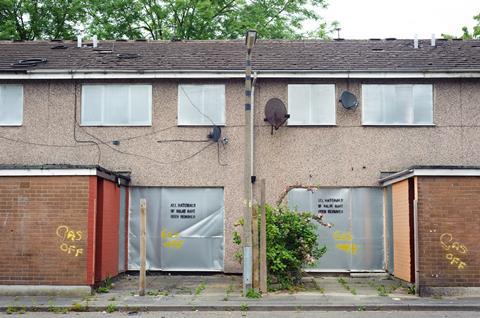Latest government figures show more than 216,000 homes lie vacant

The number of long-term empty homes in England rose by more than 5% last year to more than 216,000 units, with a number of highly-populated districts still reporting vacant units numbering in the thousands.
Months after housing charity Shelter reported there were 320,000 homeless people in the UK, data from the Ministry of Housing, Communities and Local Government showed there were 216,816 empty homes in England.
Outside London, Birmingham had the highest number of empty properties at 4,283, level with 2017’s figures, while in the capital the number of long-term empty homes rose 11% to 22,481.
Croydon registered the most number vacant properties in the capital at 1,521, up 20%.
Portsmouth saw the biggest year-on-year increase in England, with the number of empty homes more than doubling to 939.
Greater Manchester recorded 10,840 empty homes, marginally up on last year but nearly two thirds down the 31,997 peak it recorded in 2008.
Durham posted the second highest number of homes among towns and cities outside London, 4,130, down 9%, with Bradford coming third at 4,090, up 4%.
Joseph Daniels, chief executive of modular house builder Project Etopia, said while well below their 2008 peak, when the previous Labour government reported 326,954 empty homes across England, the latest data represented a “national scandal” that wasn’t going away.
“The stubbornly high number of empty homes is compounding the housing market’s deeply entrenched problems with lack of supply remaining a key driver of high prices and low affordability.
“New homes are not being built fast enough and the constant spectre of abandoned properties aggravates an already tough market,” Daniels added.
In a statement Malthouse said: “Local authorities have a range of powers at their disposal to tackle long-term empty homes, and I expect them to make full use of these so everyone has a roof over their head.
“All local authorities in England have the power to charge homes that have been empty for at least two years an extra 50% on their council tax bill, and now from April, they can increase this to 100%.”
And MHCLG said that in certain circumstances, “local authorities may be able to apply for an Empty Dwelling Management Order to take over the management of a long-term empty property and bring it back into use, where the property is causing a nuisance, and there is community support for the proposal to take over its management.










No comments yet